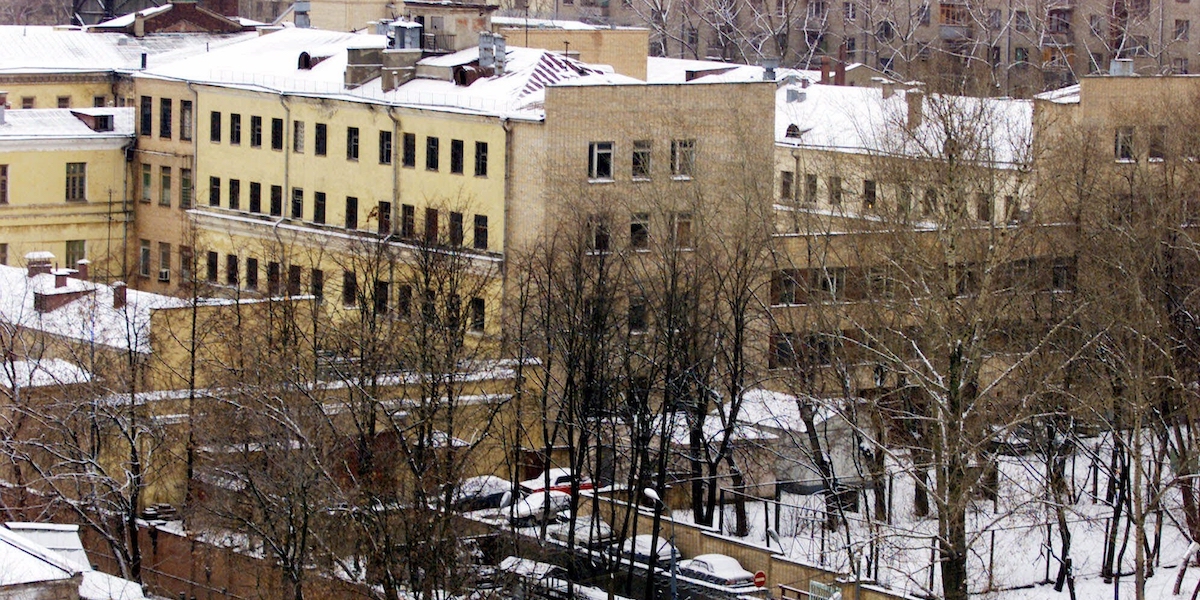Loading player
In the prison of Lefortovo, in Moscow, Evan Gershkovich, the American journalist of the Wall Street Journal arrested last March on charges of espionage for the United States. Gershkovich is the first US journalist arrested in Russia since the Cold War, and the prison where he is being held has been known for more than a century as one of the main places of detention for political opponents and journalists critical of the Russian government.
Lefortovo prison was built in 1881 and for a few decades it was mainly used for ordinary convicts sentenced to short sentences. From 1917, the year of the Bolshevik revolution, it acquired a more political function: the Soviet secret police of Joseph Stalin’s regime used it to lock up, interrogate, torture and often kill opponents of the regime. He often participated personally in interrogations and executions Lavrentiy Berialong-time head of the People’s Commissariat of Internal Affairs (the NKVD, the equivalent of the Soviet Interior Ministry), known for organizing purges and deportations during the regime.
After Stalin’s death in 1953, Lefortovo prison was first used by the KGB, the Soviet secret services, which locked up dissidents and suspected espionage, and then by the regime of Russian President Vladimir Putin.
In recent years, several well-known personalities have been imprisoned inside it, often on espionage charges deemed specious and politically motivated. Among others Alexander Litvinenko, the Russian dissident who died in London in 2006 after being poisoned, Paul Whelan, a former Marine from Michigan imprisoned in 2018, the former Russian journalist Ivan Safronov, in 2020, and now Gershkovich, arrested last 29 March at a restaurant in Yekaterinburg in west-central Russia. It appears that he was working on an article on the operations of the Wagner Group, the mercenary company that is fighting alongside the Russian army in Ukraine.
In theory, the Lefortovo prison is reserved for prisoners in pre-trial detention, therefore not yet tried, but in fact there are those who have been imprisoned there for years: Safronov remained there for over two years, and al Washington Post he recounted: «The aim is to isolate a person, to “freeze” him to obtain confessions».
Lefortovo Prison is located in northeastern Moscow in western Russia. It is composed of a series of long assembled buildings: the cells are on the right side, in a set of four-storey buildings in the shape of a “K”. It can hold around 200-300 detainees: those who have been there, ex-detainees or their lawyers, have described it as a “Soviet time capsule”, wrote the Washington Postfor the aspect it has, between shabby floors, the smell of dust and old portraits hanging on the walls: one of these is by Felix DzerzhinskBolshevik revolutionary and head of the Soviet secret police.
Lefortovo prison seen from Google Maps
Vadim Prokhorov, a Russian lawyer who has defended several people held inside Lefortovo prison, said the rules inside “are the strictest of all prisons in Russia”. The conditions of detention provide for rigid isolation, in some aspects similar to what is foreseen in Italy by 41-bis, the prison regime envisaged by the homonymous article of the penitentiary order and often called “the hard prison”.
Once arrested and taken to Lefortovo prison, inmates are placed in 10-day quarantine and then transferred to their cells, preferably alone. The cells are small, about 8 square meters each. Inside there is a cot, some shelves, a small barred window at the top, a urinal separated only by a small screen, a sink, a small fridge, a table and a chair nailed to the floor and a television status channels only.
Prisoners can go out for a maximum of one hour a day, and can only leave the cell for interrogations, hearings and medical examinations. Safronov said detainees are only allowed to take a shower a week. Telephone calls are permitted, but must be authorized in each case: Safronov said that since he did not admit to his guilt he was only allowed to make one telephone call in two years of detention.

(YURI GRIPAS/KRT (KRT10) via ANSA)
According to those who have told the prison – prisoners in letters or drawings, former prisoners and lawyers in interviews – everything inside is designed to intimidate those who live there and “bend” them psychologically. Inmates’ cells have a peephole: in one of his memoirs Valentin Moiseyev, a Russian diplomat arrested in 1998 on espionage charges and detained for over three years, wrote that during his captivity the agents looked inside every two or three minutes .
Again Moiseyev recounted that the floors of the buildings in which the cells are located are covered with long carpets: «they are not there for beauty or to please the eyes of the prisoners, but so that their footsteps do not break the absolute silence of the crypt, which is oppressive and makes your ears ring,” he wrote. Safronov, on the other hand, said that during the hour of fresh air the management starts the music very loud in all rooms to prevent the prisoners from talking to each other as much as possible.
In the prison of Lefortovo there is a library, apparently well stocked, and regularly checked by the agents to prevent notes or messages from being inserted inside the books between the inmates.
